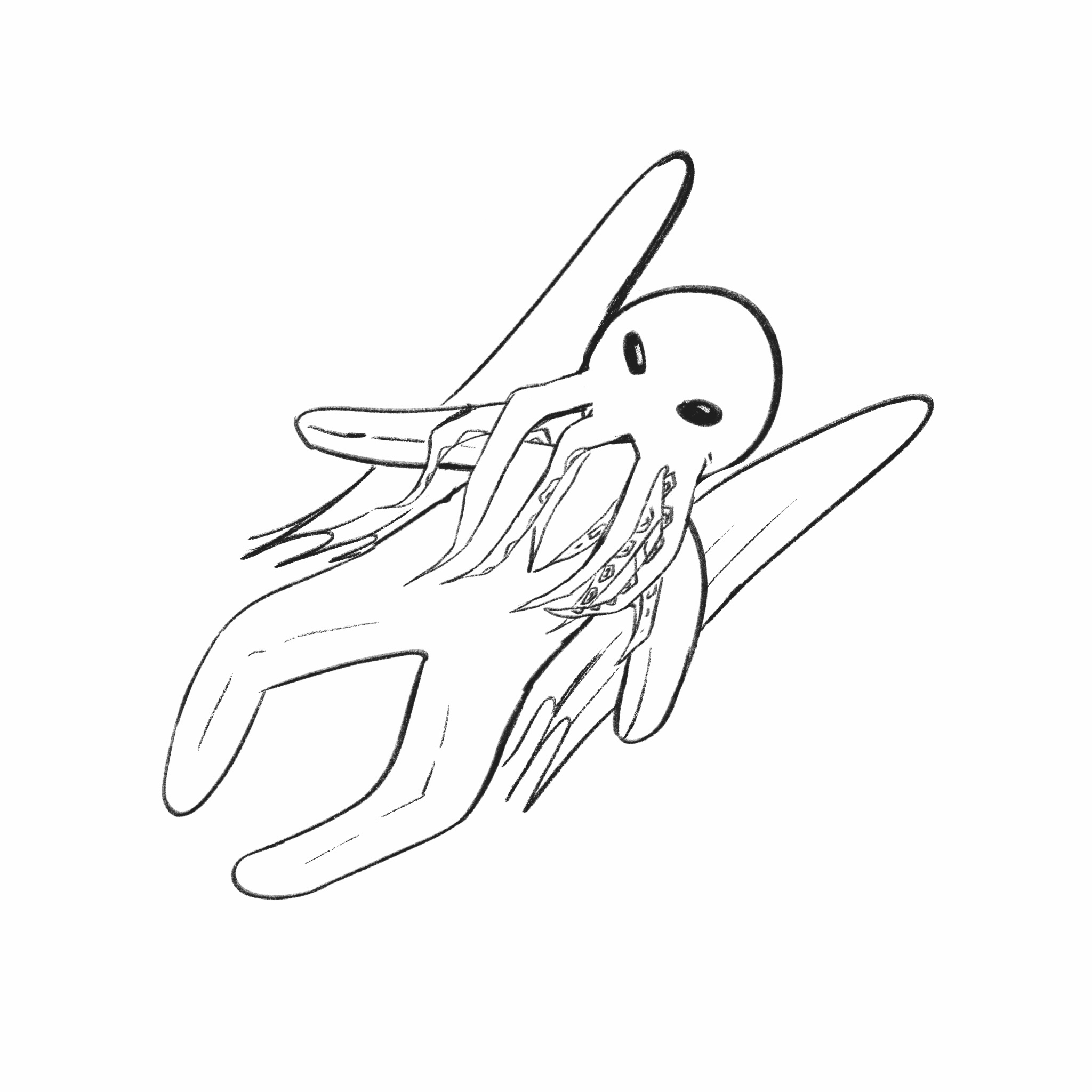I would buy a Cthulhu plush if H.P. Lovecraft weren’t so racist
October 25, 2024
 Henry Abbott
Henry AbbottEveryone knows who Stephen King is. The same goes for Anne Rice and John Carpenter. And if you don’t know the names Scott or Bloch, you’ve certainly heard of these creators’ genre-defying films “Alien” and “Psycho.” But not nearly as many people know H.P. Lovecraft, the man who inspired these iconic figures and so many others. Lovecraft’s concealment from popular culture was his own fault—it’s largely because he was the dictionary definition of problematic.
Howard Phillips Lovecraft was born in 1890 in Providence, R.I. He began writing “weird fiction” at the age of eight and is considered to be among the greatest horror authors of all time. He was also openly racist and extremely xenophobic. This fact was made jarringly evident to me during my perusal of “The Rats in the Walls,” a short story published in 1924. I enjoyed the plot of the tale but was disturbed by an outstanding element: The name of the main character’s cat was a racial slur that’s completely unacceptable both today and in the 1920s. This led me to research Lovecraft’s political views—a venture that was both unfortunate and distressing, casting the story’s themes of “fearing the Unknown” and “becoming the beast” into an unwelcome new context.
Lovecraft’s hatred of different races and cultures was far from the sole disturbance that influenced his writing. His father experienced a permanent nervous breakdown when Lovecraft was three and died when Lovecraft was eight, causing Lovecraft to develop a deep fear of going insane. His mother, having hoped for a daughter, dressed Lovecraft as a girl for much of his early childhood. As she grew older and more unstable, she developed a deeply unhealthy and pathological relationship with him that lasted until her death. Poor physical and mental health prevented Lovecraft from graduating high school, but he was extremely precocious and learned to read by the age of three. Lovecraft was unlike most other humans in more than just his capacity for learning. He regularly stayed awake for 40 hours at a time without physical detriment. He almost never went out in the daytime and always kept his curtains closed. Lovecraft was married to fellow writer Sonia Greene for five years, but she sought a divorce when he left their home in New York for Providence, the town he had grown up in. She was, by all accounts, the only woman he ever kissed in his adulthood.
It’s not surprising that someone with a life like Lovecraft’s would produce such fantastically freaky horror stories. Lovecraft’s tales of ancient aliens waiting beneath the sea, mystical demon cults, ravenous beasts lurking in the darkest city streets and students meddling with black magic still resonate with readers. Countless film and television concepts and characters originate directly from Lovecraft’s fictional worlds. The popular “Re-Animator” film franchise of the 1980-s, for instance, was an adaptation of Lovecraft’s “Herbert West, Reanimator.” The Cthulhu beast as featured in “Call of Cthulhu” has inspired everything from cute plushies on Etsy to the design of the Demogorgon monster from “Stranger Things.” Lovecraft brought the eldritch, the alien and the demonic into horror for the first time, leaving us with the knowledge that the modern horror genre is founded in racist tropes and caricatures.
Some of Lovecraft’s fear of the Unknown might have been rooted in his paranoia about going insane, but it is equally evident in his open hatred of other races and cultures. Even his most popular tales contain racist caricatures and harmful depictions of indigenous cultures, and his 1925 story “The Horror at Red Hook” is literally centered around a gang of immigrants taking over a neighborhood with their “evil” traditions. More often than not, his letters show the same sentiments: He defended white lynch mobs in America and expressed support for Hitler in private letters. Lovecraft’s fears of racially mixed relationships and cultural integration were blatant, extreme—even for the 1930s—and very evident in his tales.
With growing knowledge of Lovecraft’s views and their problematic nature, many writers have tried to reclaim and re-interpret Lovecraft’s tales for a new society. Matt Ruff’s book “Lovecraft Country,” for instance, centers non-white protagonists in their encounters with Lovecraft’s fictional beasts. According to Ruff, the fear of the Unknown expressed by Lovecraft’s stories remains universal. Just because it manifested in extreme xenophobia for Lovecraft does not mean that such bigotry is what readers are forced to take away. Unfortunately, a rise in awareness has also meant a rise in denial: Some Lovecraft followers are unwilling to accept his flaws, claiming that those who speak against Lovecraft’s bigotry are trying to bury his legacy. They should know, however, that Lovecraft’s impact on horror and fantasy is so significant as to make his erasure impossible. What future creators can do is recast their stories to be more diverse and inclusive, taking note of the intricacy and controversy around cosmic horror authors’ usage of the Weird and the Unknown.
Comments
Before submitting a comment, please review our comment policy. Some key points from the policy:
- No hate speech, profanity, disrespectful or threatening comments.
- No personal attacks on reporters.
- Comments must be under 200 words.
- You are strongly encouraged to use a real name or identifier ("Class of '92").
- Any comments made with an email address that does not belong to you will get removed.

I agree with many of your points in your opinion piece. However, I cannot get over the fact that you are righting about the dangers of racism not being addressed by Lovecraft fans, while writing for a publication called the ‘Orient,’ which is an inherently racist term. In fact, the very publication has challenged this in a 2019 article but was not redressed.